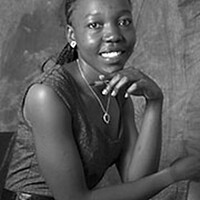Why the paths of Pluto's moons are so perplexing
New Horizon scientists have revealed fresh data that indicate the orbits of Pluto's four smallest moons are even more chaotic than expected.
"The way I would describe this system is not just chaos, but pandemonium," Mark Showalter, a co-investigator on the New Horizons mission, said Monday at the 47th Annual Meeting of the American Astronomical Society's Division for Planetary Sciences. "We honestly have not seen anything like this before, and we still don't know what to make of it."
The new findings “show that as the four moons orbit Pluto and its largest moon, Charon, some of them are spinning incredibly fast, one is spinning backward against its orbit and some are tilted on their sides,” Space.com reports.
NASA’s New Horizons spacecraft, made a close flyby of Pluto in July capturing images that gave scientists a new view of the planet and its moons revealing a cosmic dance with a chaotic rhythm.
NASA explained that, “if you lived on one of Pluto’s moons, you might have a hard time determining when, or from which direction, the sun will rise each day.”
Pluto has five moons: Charon, Hydra, Nix, Kerberos, and Styx.
According to NASA, “the moons wobble because they’re embedded in a gravitational field that shifts constantly. This shift is created by the double planet system of Pluto and Charon as they whirl about each other.”
In the lastest analysis, scientists say the state of the orbits of Pluto’s moons are beyond chaotic and it can’t be explained why it is so.
"If Hydra were spinning much faster, material would fly off its surface due to the centrifugal force," Mr. Showalter said in a statement from NASA.
"This is unprecedented," Showalter said at the news conference. "We simply have not seen a satellite system that does this."
The scientists suggest that Pluto is home to ice volcanoes too.
“Two mountains near the southern edge of the heart-shaped plains on Pluto appear to be volcanoes that once spewed a slurry of ices onto the surface. These so-called cryovolcanoes support the notion that cold, tiny Pluto is a far more active world than previously thought,” the Smithsonian Magazine reports.






